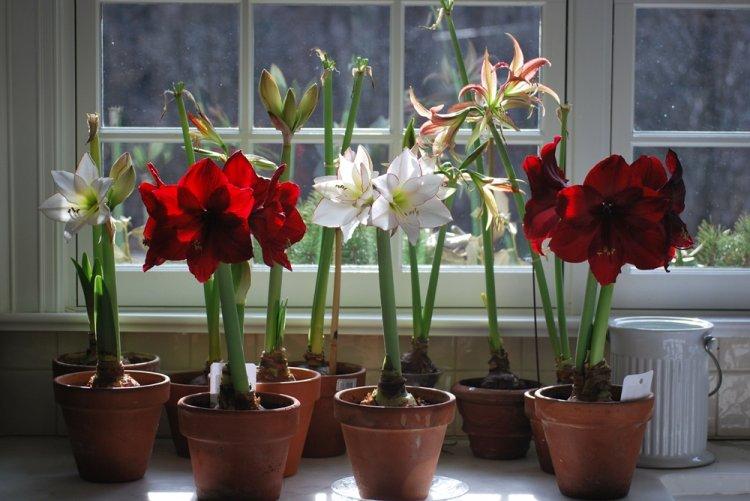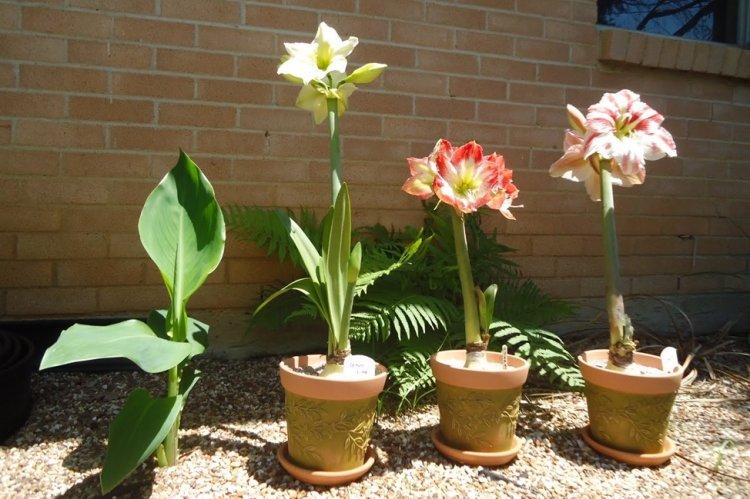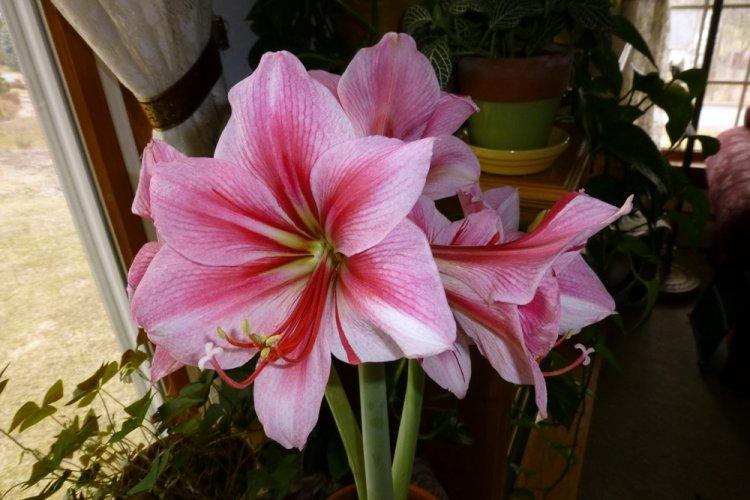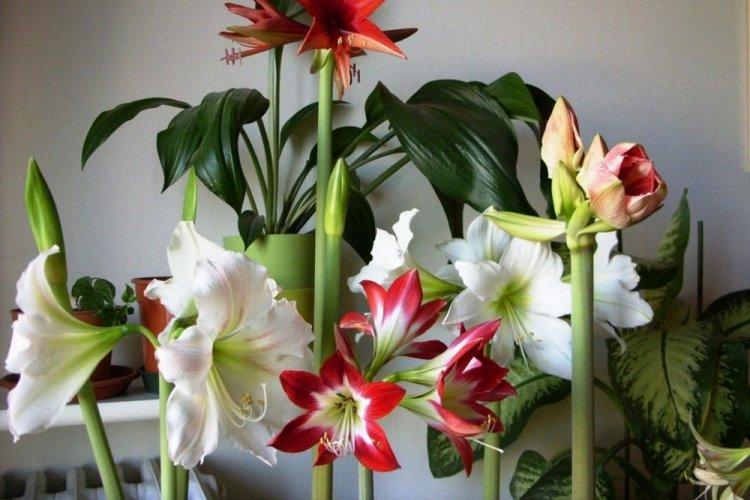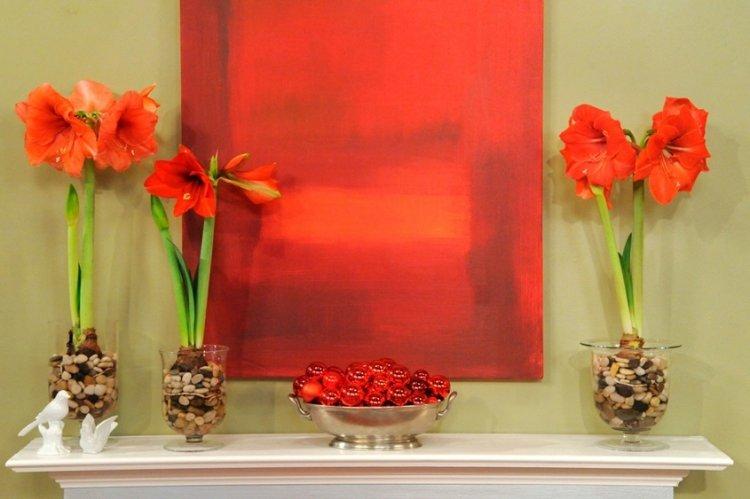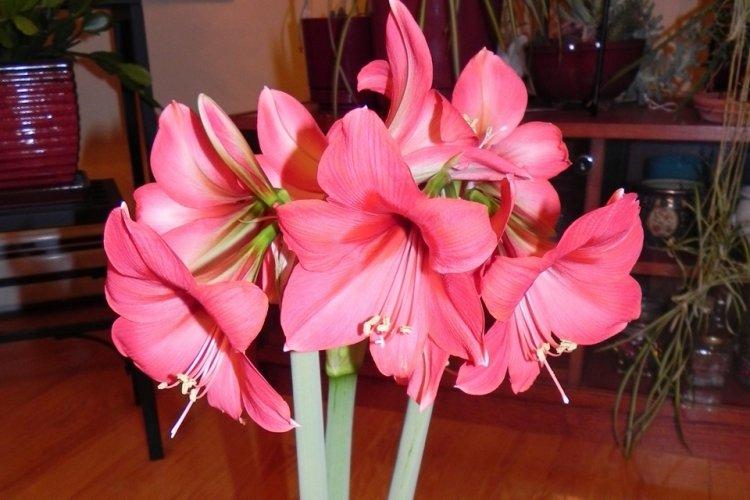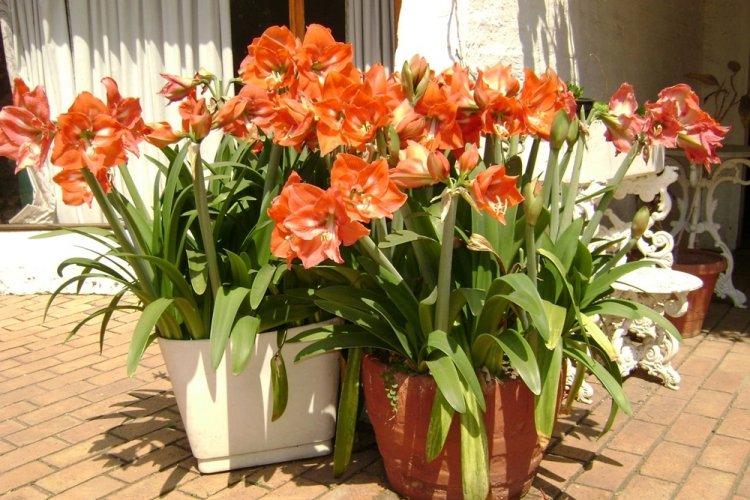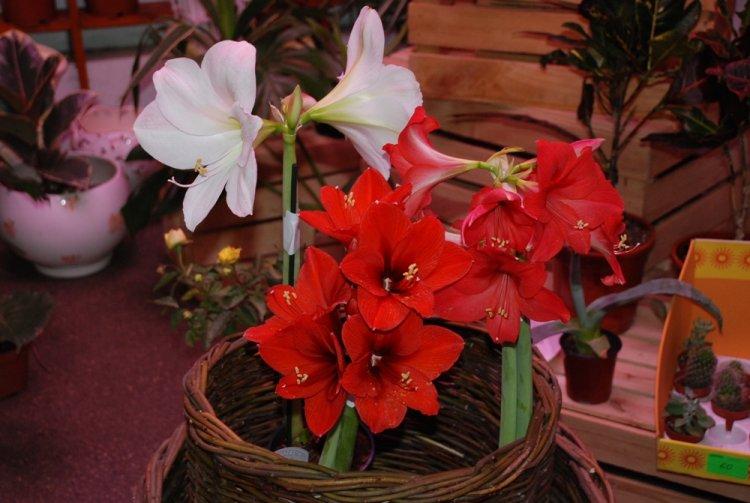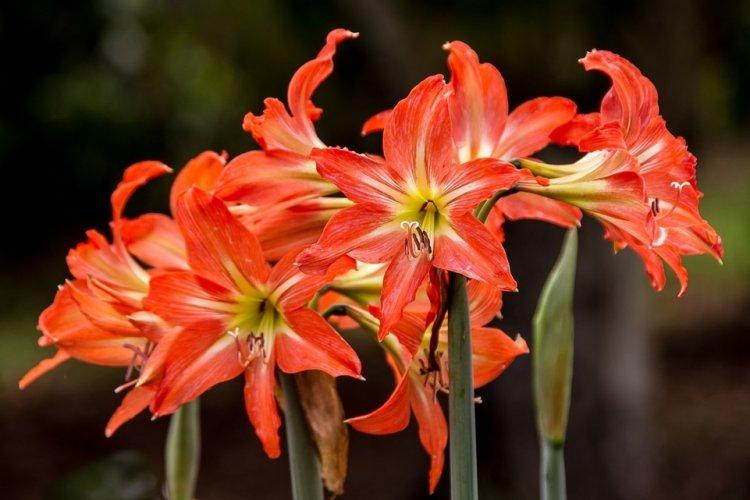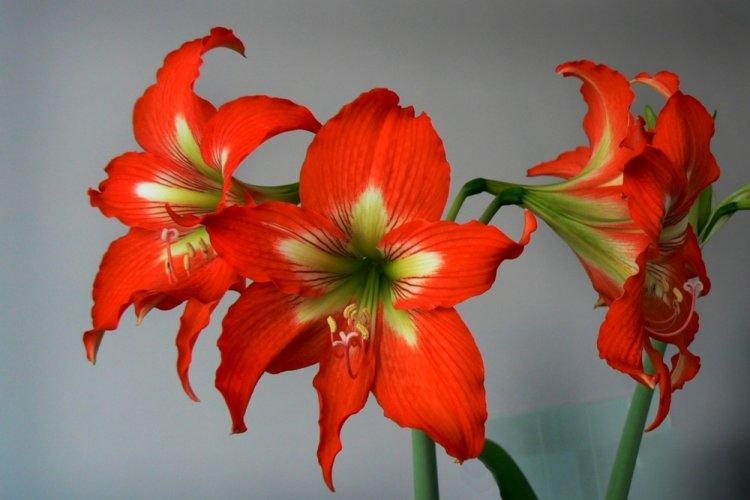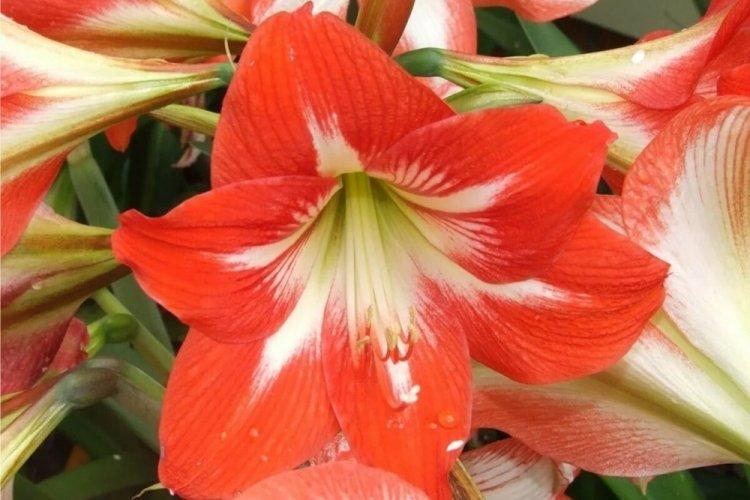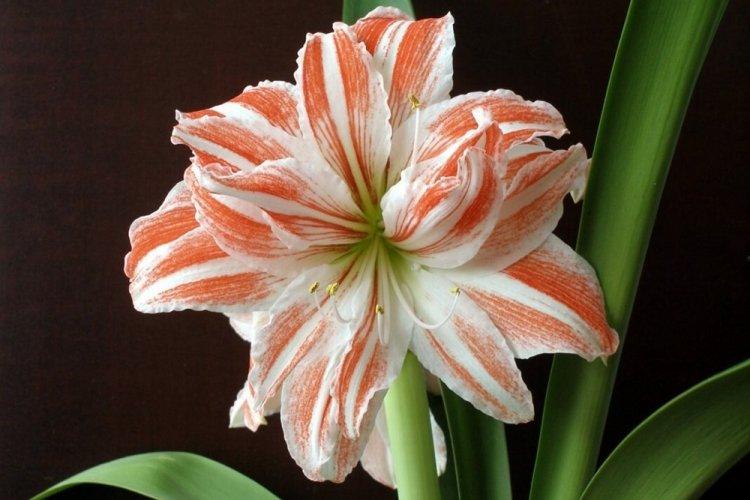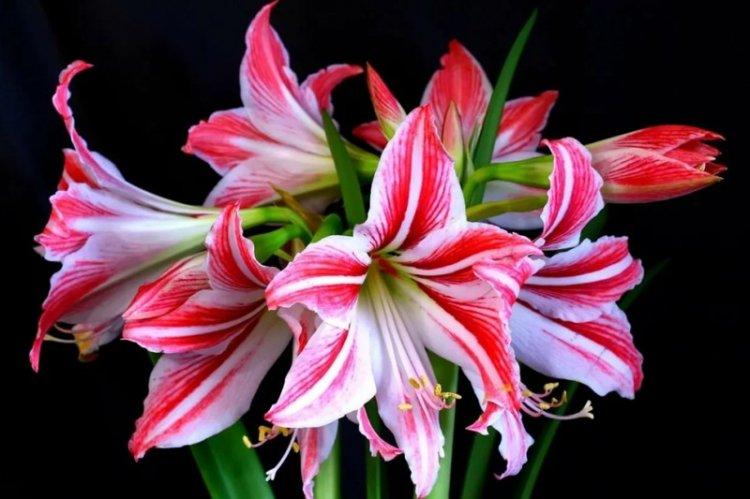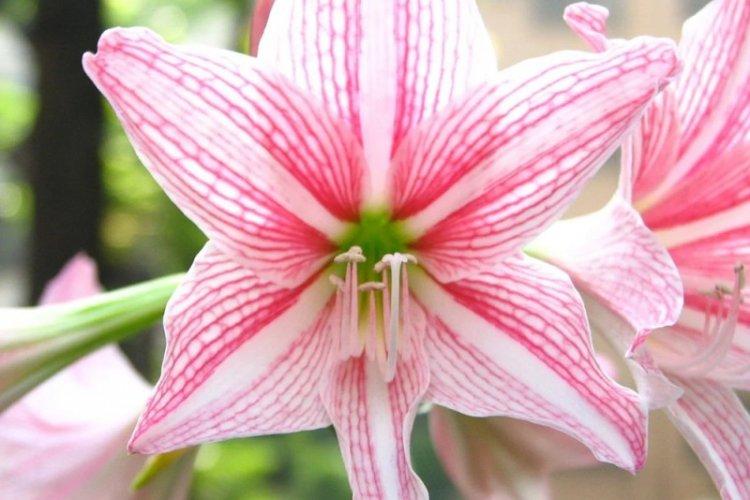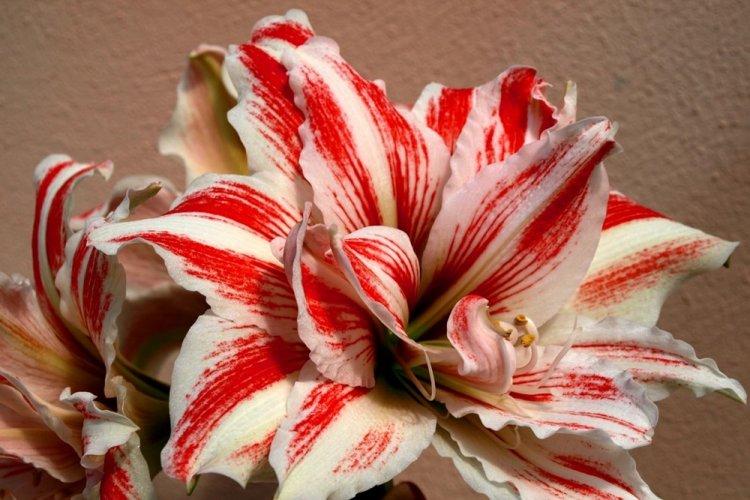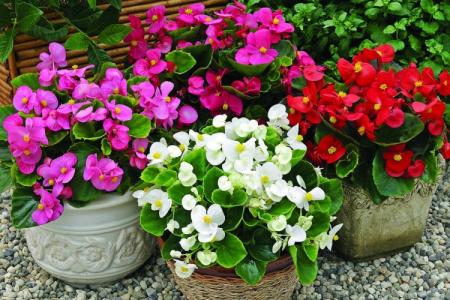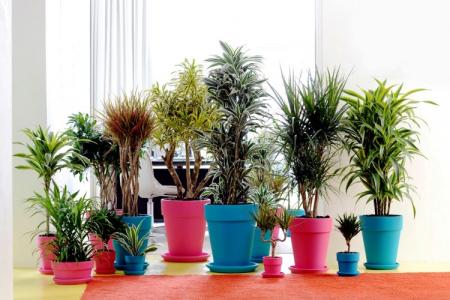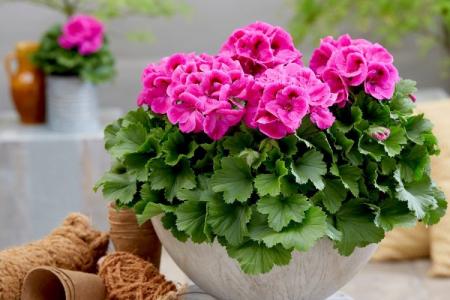
Bright and effective hippeastrum is a colorful bouquet in one flowerpot. It will become an amazing decoration of a green home corner and a wonderful gift for loved ones. And we will tell you what to do so that hippeastrum delights you with its beauty as long as possible!
general information
The flowers of the hippeastrum resemble large and bright stars, which is why the flower got its name. In its natural environment, it grows in the tropics and subtropics, mainly in the Amazon basin. Hippeastrum is very similar to its closest relative, amaryllis, only that it is mainly found in South Africa.
Because of this similarity, hippeastrum is often confused with other plants from the amaryllis family. Therefore, it was difficult to establish exactly how many species of it exist in nature. Today it is more transparent - there are about 90 varieties of hippeastrum.

In Western Europe, Kerr's firm in Liverpool was especially famous. Although they mistakenly presented their flowers as amaryllis, their work and participation in international exhibitions has given tremendous impetus to gardeners and breeders. Later, when several more species were brought from Peru and Brazil, the real era of crossing began.
Hipppeastrum is a flowering perennial with a rounded bulb and a short, wide stem. Long resilient leaves grow oppositely and stretch up to 70 cm. On the same long stem, up to six large bright flowers, resembling a funnel, grow. The most common petal color is red in all its variety.
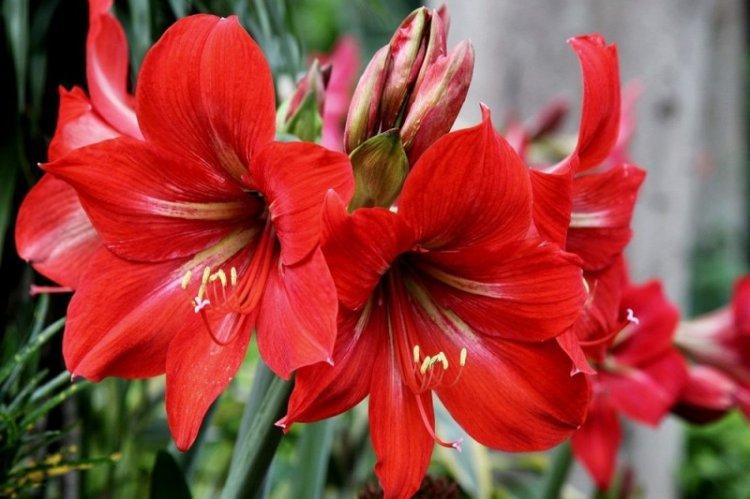
Types of hippeastrum
For a long time, Hippeastrum was found exclusively in South America and the surrounding regions, but in the sixteenth century, travelers brought it to Europe. Soon the beautiful and spectacular flower was appreciated by gardeners and the years of selection and selection began. The first hybrid appeared at the end of the eighteenth century - it was Johnson's hippeastrum. Let's figure it out in more detail!
Hyppeastrum hybrid
This is a common name for dozens of colorful varieties bred by breeders in recent years. Most often, there are red, pink, orange shades and their variations. Two-tone varieties with contrasting stripes or spots look interesting. Flowers are large, up to 20 cm in diameter and 2-6 pieces on a high peduncle.
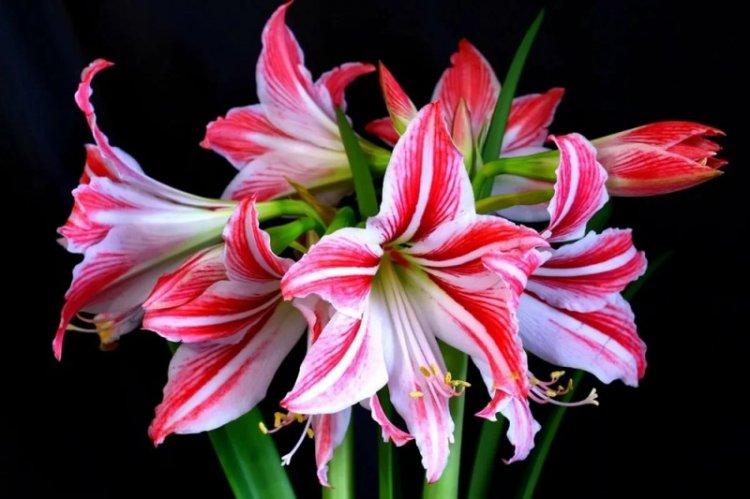
Hippeastrum teyucuarense
This is one of the most unusual varieties, notable for its interesting colors. The petals are collected in tubular bells, green in the center and with bright red or pink edges. The transition from color to color is sharp and contrasting, and the middle resembles a star. All petals are covered with a mesh pattern of protruding veins.
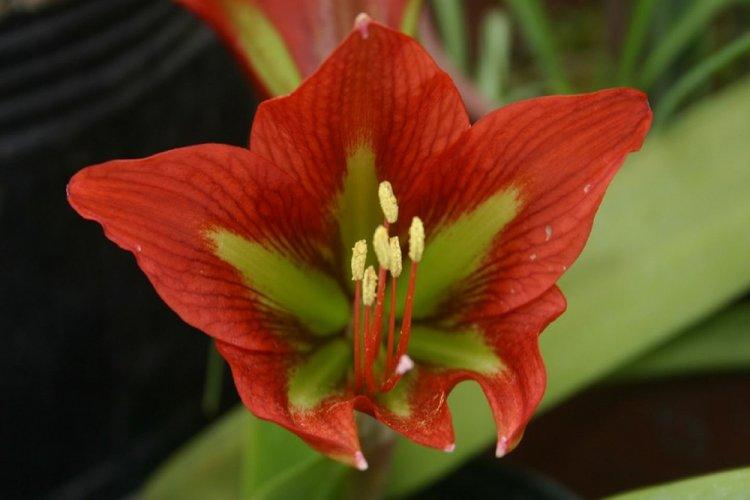
Cavalier hippeastrum
This is the first species that was brought to Europe and began to be bred in closed botanical gardens. For a long time, the cavalier hippeastrum was the star of private estates and flower farms. Soon, breeders were actively interested in spectacular brick-red flowers.
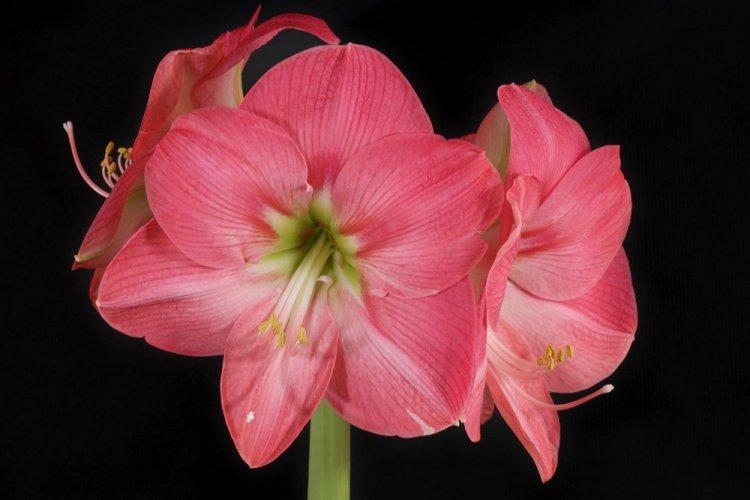
Johnson's hippeastrum
This is the brainchild of the English watchmaker Johnson, who in the eighteenth century managed to cross the striped and royal amaryllis. By its nature, it is a hybrid species, therefore its name in the original is written accordingly: Hippeastrum x johnsonii.
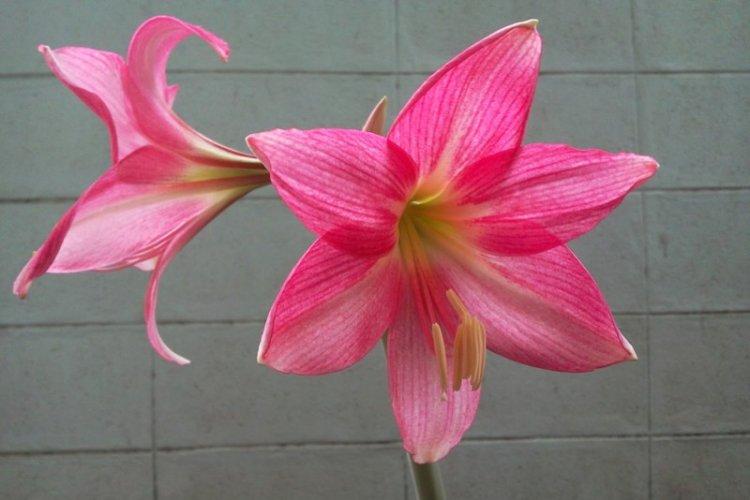
Royal hippeastrum
This variety is of medium height - up to 30-50 cm, but with excellent decorative properties. The petals are very pointed towards the edge, so they especially resemble a large star. Royal hippeastrum is traditionally bright scarlet, so it will become a real decoration of any garden.
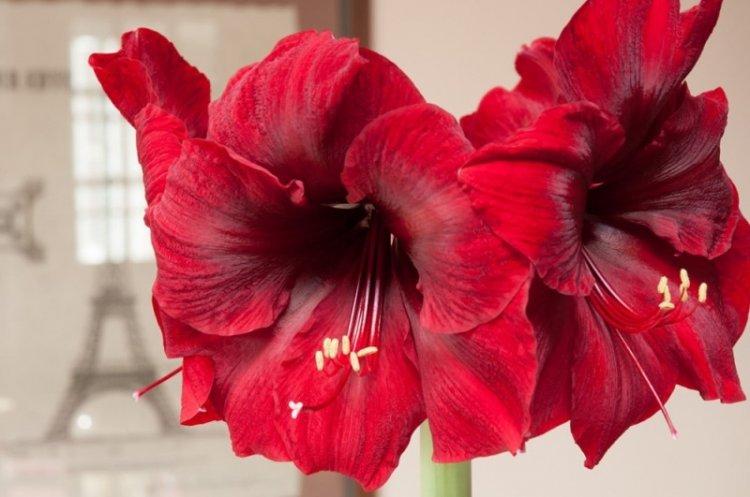
Columnar hippeastrum
This species is distinguished by very delicate and neat inflorescences, which are especially loved by florists and landscape designers. On one stem, about 6-8 large tubular flowers diverge in different directions.The petals have a delicate salmon-peach shade with distinct thin brownish veins.
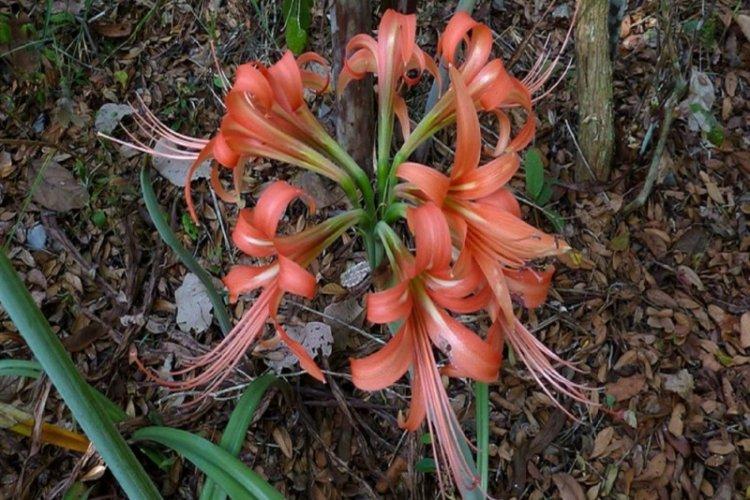
Hippeastrum care
Hippeastrum lives in an apartment, but in the summer he feels great in the garden, dug into the ground. If you follow all the requirements, you can control the flowering period and even grow a flower by a specific date. On average, the buds bloom for about a week and a half.
Temperature
During flowering, hippeastrum is in dire need of heat, so keep an eye on the air conditioner and open windows so that the thermometer does not drop below 17 degrees. Optimal conditions start at 20, so that in summer the flowerpot feels great outside.
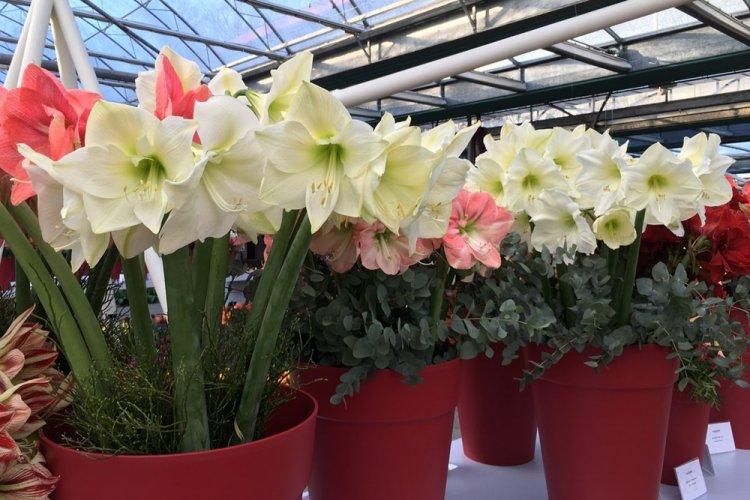
Lighting
The more bright sunlight the hippeastrum receives, the better. But put the flowerpot so that aggressive direct rays do not fall on it - burns are possible. The flower will not fall to the side and will retain its shape if the flowerpot is periodically turned.

Watering
It is very important not to overfill the hippeastrum, otherwise its root system may rot. When the flower is just starting to develop, water it minimally because it is still very weak. Gradually increase the intensity as the stalk is released. When the flowering is over, bring the watering back to zero just as smoothly.
When watering the hippeastrum, it is advisable not to wet the stem and bulb. You can play it safe and use bottom watering when warm water is poured into the pot holder. Gradually add and drain the excess when the substrate is completely saturated.
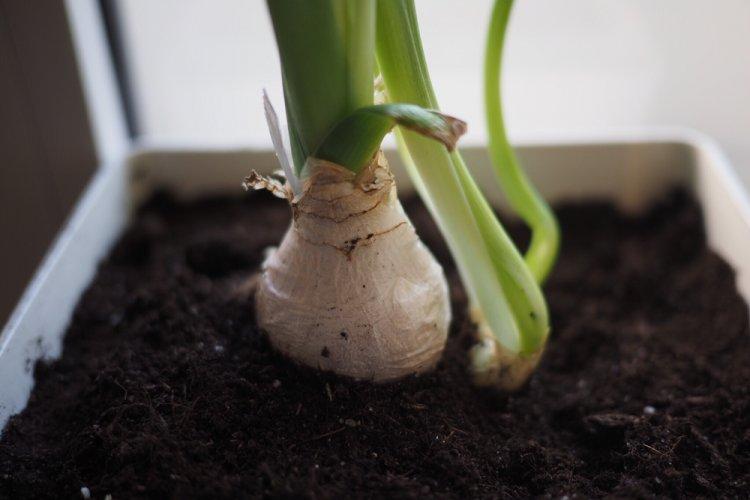
The soil
Hippeastrum definitely needs loose soil, so use a filler - coarse sand or perlite. And don't forget about good drainage from the bottom of the flowerpot! A store-bought mixture or leafy earth with the addition of turf and humus is suitable as a basis.
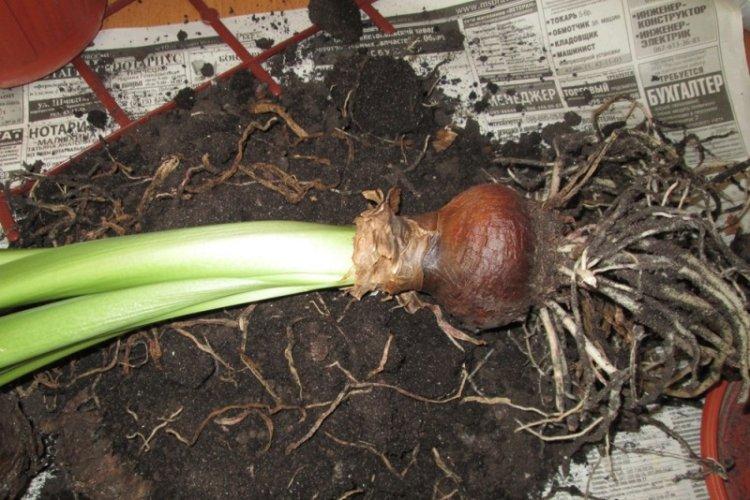
Fertilizers and feeding
All abundantly flowering plants need to be fed regularly, because this process consumes a lot of energy and nutrients. After germination, liquid mineral fertilizers are needed, after the formation of leaves - complex mixtures. When the peduncle stretches about 15 cm, you need potassium manganese, and a little later, phosphorus.
Due to the fact that the bulbs of the hippeastrum need to be planted in a rather tight pot, the soil is poor. The plant quickly draws out all the juices and trace elements from it. So there is no way to do without systematic feeding.
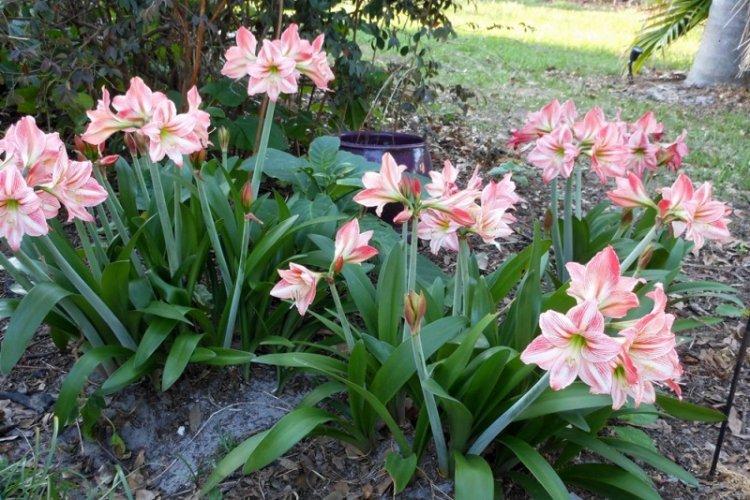
Wintering
In preparation for the dormant period, hippeastrum sheds all leaves naturally. Drying and falling off is not a symptom of disease, but the natural life cycle of the plant. After that, you will need to cut off the stem and remove the flowerpot for a couple of months in a cold, dark place. It does not need to be watered and is best turned gently on its side.

Transplant and reproduction
Only fresh, still wet seeds are suitable for planting, because their germination is much higher than dry ones. But even so, it is long and difficult, so it is easier to cut off the baby from the bulb when transplanting. This requires a very sharp, sterile knife and crushed charcoal to process the fresh cut. A young flower is planted, and for several years the leaves are not cut off for the winter.
The next unusual way is to cut the healthy parent bulb into pieces. Choose a healthy root, deepen it about a third into the ground, cut the top right down to the soil, and insert wooden knitting needles into the cuts to prevent the bulb from growing together.

Routine maintenance remains the same until a stem and a few leaf blades grow from each part. It is best to carry out the procedure at the end of autumn, and then the next spring the flower can be planted in different flowerpots.
Hippeastrum does not need a regular transplant - no more than once every 3-4 years. This should be done after flowering and by transshipment, so as not to injure the root system. Take a flowerpot in size so that up to 2 cm of space remains on all sides of the bulb.

Pest and disease control
The main pests of the hippeastrum are scale insects, scale insects and spider mites. They extract useful substances from the plant, so it will not be able to bloom. Use an insecticide solution to get rid of pests.
The bulb will rot due to stagnant water after too much watering. If this happens, you need to remove all rotten places, dry the bulb well in the fresh air, treat it with fungicides and transfer it to a new sterilized soil.
Small red spots indicate a fungal burn. All damaged fragments must be punctured to a completely healthy tissue. Process the sections with chalk with copper sulfate, and then proceed in the same way as when rot appears. This is drying, antiseptic treatment and transplanting into a new flowerpot.

Hippeastrum - photo
If you like to have colorful bouquets at home, then hippeastrum is your choice. Unlike cut flowers, you definitely won't throw it away in a week. And it will become a real decoration of any interior!
